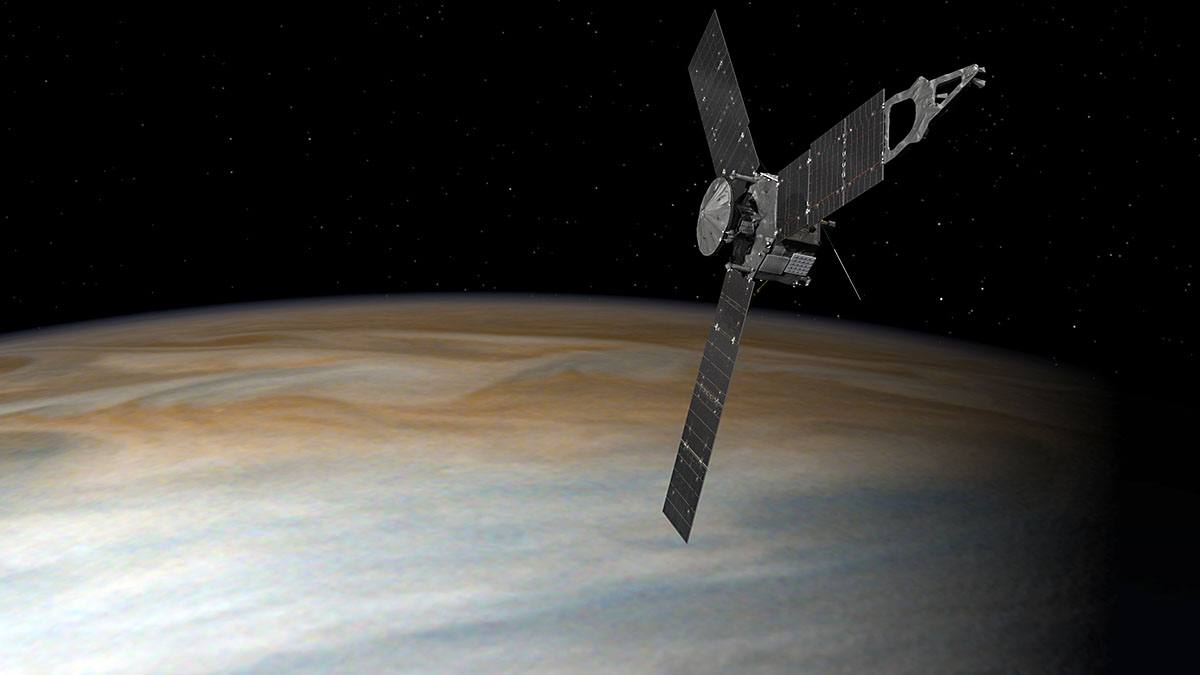This illustration depicts NASA’s Juno spacecraft in orbit above Jupiter. From its unique polar orbit, Juno will repeatedly dive between the planet and its intense belts of charged particle radiation, coming only about 3,000 miles (5,000 kilometers) from the cloud tops at closest approach. (NASA/JPL-Caltech)
Home This illustration depicts NASA’s Juno spacecraft in orbit above Jupiter. From its unique polar orbit, Juno will repeatedly dive between the planet and its intense belts of charged particle radiation, coming only about 3,000 miles (5,000 kilometers) from the cloud tops at closest approach. (NASA/JPL-Caltech) This illustration depicts NASA's Juno spacecraft in orbit above Jupiter. From its unique polar orbit, Juno will repeatedly dive between the planet and its intense belts of charged particle radiation, coming only about 3,000 miles (5,000 kilometers) from the cloud tops at closest approach. (NASA/JPL-Caltech)
This illustration depicts NASA’s Juno spacecraft in orbit above Jupiter. From its unique polar orbit, Juno will repeatedly dive between the planet and its intense belts of charged particle radiation, coming only about 3,000 miles (5,000 kilometers) from the cloud tops at closest approach. (NASA/JPL-Caltech)



